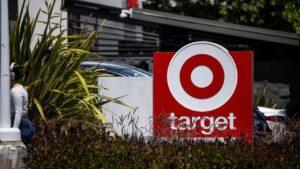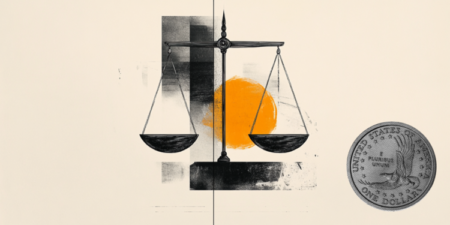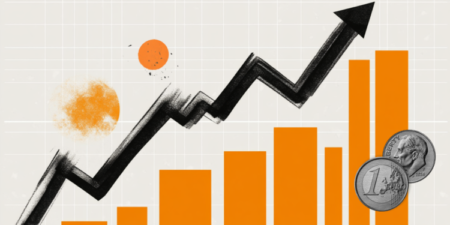Here is what you need to know on Wednesday, May 21:
Pound Sterling (GBP) gathers strength against its rivals early Wednesday following the release of April inflation data from the UK, while the US Dollar (USD) continues to weaken on trade uncertainty and political woes. The economic calendar will not feature high-tier data releases midweek, allowing investors to remain focused on geopolitics and comments from central bankers.
US Dollar PRICE This week
The table below shows the percentage change of US Dollar (USD) against listed major currencies this week. US Dollar was the weakest against the Swiss Franc.
| USD | EUR | GBP | JPY | CAD | AUD | NZD | CHF | |
|---|---|---|---|---|---|---|---|---|
| USD | -1.36% | -1.27% | -1.22% | -0.64% | -0.80% | -1.14% | -1.78% | |
| EUR | 1.36% | 0.07% | 0.20% | 0.79% | 0.70% | 0.29% | -0.41% | |
| GBP | 1.27% | -0.07% | -0.17% | 0.71% | 0.62% | 0.21% | -0.49% | |
| JPY | 1.22% | -0.20% | 0.17% | 0.59% | 0.59% | 0.28% | -0.51% | |
| CAD | 0.64% | -0.79% | -0.71% | -0.59% | -0.14% | -0.50% | -1.20% | |
| AUD | 0.80% | -0.70% | -0.62% | -0.59% | 0.14% | -0.41% | -1.09% | |
| NZD | 1.14% | -0.29% | -0.21% | -0.28% | 0.50% | 0.41% | -0.70% | |
| CHF | 1.78% | 0.41% | 0.49% | 0.51% | 1.20% | 1.09% | 0.70% |
The heat map shows percentage changes of major currencies against each other. The base currency is picked from the left column, while the quote currency is picked from the top row. For example, if you pick the US Dollar from the left column and move along the horizontal line to the Japanese Yen, the percentage change displayed in the box will represent USD (base)/JPY (quote).
The UK’s Office for National Statistics (ONS) reported in the European morning that annual inflation in the UK, as measured by the change in the Consumer Price Index, climbed to 3.5% in April from 2.6% in March. This reading came in above the market expectation of 3.3%. On a monthly basis, the CPI rose by 1.2% after increasing by 0.3% previously. Finally, the core CPI, which excludes volatile food and energy prices, increased by 3.8% on a yearly basis, surpassing analysts’ estimate of 3.6%. GBP/USD gathered bullish momentum after hot UK inflation data and advanced to its highest level since February 2022 above 1.3450.
China’s Commerce Ministry said early Wednesday that the US’ measures on China’s advanced chips are “typical of unilateral bullying and protectionism,” adding that the US violates international law by abusing export controls to contain and suppress China. Meanwhile, House Republicans are struggling to pass President Donald Trump’s tax bill, which could add roughly $3.8 trillion to the national debt, according to an analysis released Tuesday by the Congressional Budget Office (CBO). The USD Index stays under bearish pressure on Wednesday and trades near 99.50, losing about 0.5% on the day, while US stock index futures fall between 0.4% and 0.6% after Wall Street’s main indexes closed in negative territory on Tuesday.
EUR/USD builds on its weekly gains and rises toward 1.1350 in the early European session. The European Central Bank (ECB) will publish its Financial Stability Review later in the day.
The data from Japan showed in the early Asian session that Exports rose by 2% on a yearly basis in April, as expected. In the same period, Imports declined by 2.2%. USD/JPY stays on the back foot on Wednesday and declines toward 143.50.
Gold benefited from the risk-averse market atmosphere and gained nearly 2% on Tuesday. XAU/USD preserves its bullish momentum and trades comfortably above $3,300, rising about 1% on the day.
USD/CAD continues to stretch lower and trades below 1.3900 after closing the first two days of the week in the red. Statistics Canada reported on Tuesday that the annual CPI inflation softened to 1.7% in April from 2.3% in March.
Inflation FAQs
Inflation measures the rise in the price of a representative basket of goods and services. Headline inflation is usually expressed as a percentage change on a month-on-month (MoM) and year-on-year (YoY) basis. Core inflation excludes more volatile elements such as food and fuel which can fluctuate because of geopolitical and seasonal factors. Core inflation is the figure economists focus on and is the level targeted by central banks, which are mandated to keep inflation at a manageable level, usually around 2%.
The Consumer Price Index (CPI) measures the change in prices of a basket of goods and services over a period of time. It is usually expressed as a percentage change on a month-on-month (MoM) and year-on-year (YoY) basis. Core CPI is the figure targeted by central banks as it excludes volatile food and fuel inputs. When Core CPI rises above 2% it usually results in higher interest rates and vice versa when it falls below 2%. Since higher interest rates are positive for a currency, higher inflation usually results in a stronger currency. The opposite is true when inflation falls.
Although it may seem counter-intuitive, high inflation in a country pushes up the value of its currency and vice versa for lower inflation. This is because the central bank will normally raise interest rates to combat the higher inflation, which attract more global capital inflows from investors looking for a lucrative place to park their money.
Formerly, Gold was the asset investors turned to in times of high inflation because it preserved its value, and whilst investors will often still buy Gold for its safe-haven properties in times of extreme market turmoil, this is not the case most of the time. This is because when inflation is high, central banks will put up interest rates to combat it.
Higher interest rates are negative for Gold because they increase the opportunity-cost of holding Gold vis-a-vis an interest-bearing asset or placing the money in a cash deposit account. On the flipside, lower inflation tends to be positive for Gold as it brings interest rates down, making the bright metal a more viable investment alternative.
Read the full article here
















